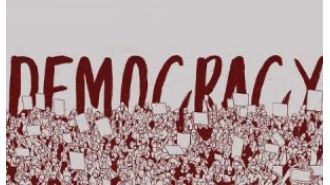COVID-19 – June notes
5 notes on COVID-19 –
1) We’re still in the first leg of the pandemic. Unlike notes I shared in the early days, we now have plenty of data on how things are going. So, I thought we’d take a quick look.

I had two takeaways when I looked at this. First, I expect the US, Brazil, and India to be up in any list that shows total number of cases. They’re among the most populous countries on the planet. But, that then raises a question – how is it that Indonesia and Pakistan (similar populations to the US and Brazil) aren’t featuring on this chart?
Next, the trend in the US is plain scary – especially given we’re clearly in the first wave.
2) But, since the chart above has a population bias, the chart below is a better chart to look at. This one looks at new cases per million people.

This chart, in turn, tells two stories.
On the one hand, it shows how well the European countries have flattened the curve. In the early days, we were talking about how impressively the likes of South Korea were dealing COVID-19 in comparison with the likes of Italy. This shows that the European nations found their way eventually.
On the other hand, it shows just how badly the US has botched it.
I also took a look deaths per per million people to see if it’d show something new.

I didn’t realize the extent to which the UK botched their response in the early days till I saw this. I wonder if Boris Johnson’s own COVID-19 experience changed his administration’s approach.
I’m still not clear why the death rate is significantly different across nations. For now, I’m running with the assumption that # of new cases are the best leading indicator we have.
3) I was surprised to India’s trend line to be so low on the “per million people” chart vs. the other. It speaks to the population related biases that makes this chart so much better. Based on this, it does look like the government has done an admirable job – at least relatively. That said, I do worry that we’re still in the early days of the pandemic. So, time will tell.
4) I think there are 4 factors that determine a nation’s response to a pandemic like this one – 1) competence of the government, 2) population density, 3) culture (collectivist vs. individualist), and 4) extent of politicization of important issues.
Based on this hypothesis, I wasn’t hopeful about how things would play out in the US and said as much in the early days of the pandemic – “The most dangerous places with COVID-19 on the planet today – particularly if you are over 50 years – are places which are neither acting early nor ramping up on testing. Sadly for those of us here, the United States squarely falls in that bucket. There are many good pieces of coverage that outline just how poorly the administration and the CDC have handled this situation.”
I did, however, hold out hope that a combination of significantly lower population density outside of the urban centers would help counteract some of the downside from 1), 3), and 4). But, that hope was clearly misplaced.
If there is a silver lining at this moment, it is a graph that Indeed’s Chief Economist shared about COVID-19 cases in Republican/red and Democratic/blue counties.

My hope is that the effect on the red counties will spur positive movement from the administration as we’re in an election year. Positive movement would include some or all of – acceptance of where we are vs. denial, significantly more testing and contact tracing, masks, and a more gradual, fact based, reopening. Fingers crossed.
5) On an individual level, it is hard to keep up the resolve to keep up the commitment to physical distance after three months of it. I’ve heard from plenty of folks about the frustration they feel. It is understandable. Video calls are tiring and we’ve definitely felt frustrated ourselves.
Given we’re likely going to be in it for at least another year, I don’t think living in isolation is the answer. But, that said, going back to the old normal isn’t either.
There’s plenty of middle ground in between and it involves avoiding crowds, meeting folks in smaller groups, and staying as safe as possible while not driving ourselves crazy.
Wishing all of us plenty of luck in the coming months.
We’re going to need it.






